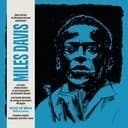Interval Formula and Dorian Characteristics
C♭ Dorian follows the standard Dorian interval pattern W-H-W-W-W-H-W, yielding the notes C♭-D♭-E♭♭-F♭-G♭-A♭♭-B♭♭-C♭. The defining feature of any Dorian mode is the major sixth degree, which in this case is A♭♭ (enharmonically equivalent to G natural), distinguishing it from C♭ Natural Minor (Aeolian mode). This single interval alteration creates the characteristic "bright minor" sound that Dorian modes are known for throughout music. The scale contains the intervals: root, major 2nd, minor 3rd, perfect 4th, perfect 5th, major 6th, and minor 7th. However, the notation complexity with double flats (E♭♭, A♭♭, B♭♭) makes this theoretical scale nearly impossible to read in practice, which is why B Dorian is universally preferred for the identical pitch collection.
Relationship to B♭♭ Major and Enharmonic Equivalence
As the second mode of B♭♭ Major, C♭ Dorian shares identical notes with its parent scale but centers on C♭ as the tonal focus. However, this parent-scale relationship exists only in theory—B♭♭ Major itself is extraordinarily rare and impractical due to its extreme key signature requiring multiple double flats. The enharmonic equivalent, B Dorian, derives from A Major as its second mode, using a manageable three-sharp signature (F#, C#, G#) that musicians can easily read and perform. This demonstrates why enharmonic respelling is crucial in practical music-making. While other Dorian scales like D Dorian, E Dorian, and A Dorian appear regularly in compositions, C♭ Dorian exists solely as a theoretical construct to complete the modal system across all possible key signatures.
Practical Applications and Genre Usage
In practical musical applications, C♭ Dorian never appears—musicians would always use B Dorian instead. However, understanding the theoretical concept helps clarify modal relationships and enharmonic equivalence. The Dorian mode itself is foundational in jazz improvisation over minor seventh chords, where the raised sixth creates sophisticated voice leading and colorful melodic options. Progressive rock, fusion, and contemporary composition frequently employ Dorian modes for their balanced character—darker than major but brighter than natural minor. The characteristic i-IV progression (which would theoretically be C♭m-F♭ in this key, but is actually played as Bm-E when using B Dorian) provides the quintessential Dorian sound heard in countless modal compositions. While scales like G Dorian and C Dorian are practical for guitar and keyboard, this theoretical variant demonstrates the limits of flat-based key signatures.
Learning Recommendations and Practical Approach
Rather than attempting to learn C♭ Dorian, musicians should focus exclusively on B Dorian, which produces the same pitches with dramatically simpler notation. Begin by comparing B Dorian with B Natural Minor to understand how the raised sixth (G# versus G natural) transforms the minor sound into the characteristic Dorian quality. Practice B Dorian over Bm7 chord progressions, emphasizing the major sixth interval to internalize the modal color. Study iconic Dorian compositions like "So What" (in D Dorian) and "Moondance" (in G Dorian), then transpose these concepts to B Dorian for practical application. Understanding C♭ Dorian's theoretical existence enriches your knowledge of music theory's systematic completeness, but all actual musical work should use the enharmonically equivalent B Dorian for clarity, readability, and practical performance considerations.





